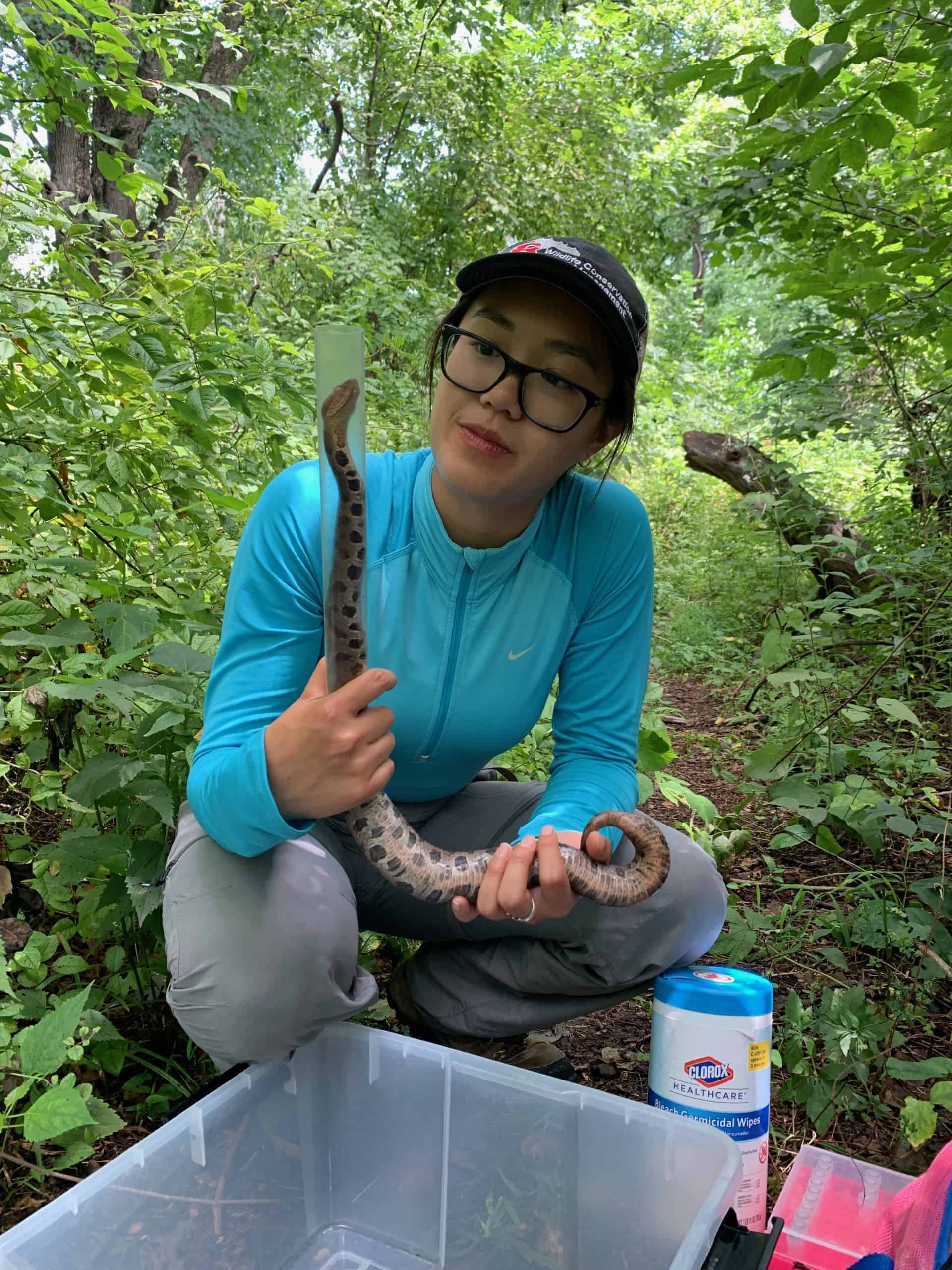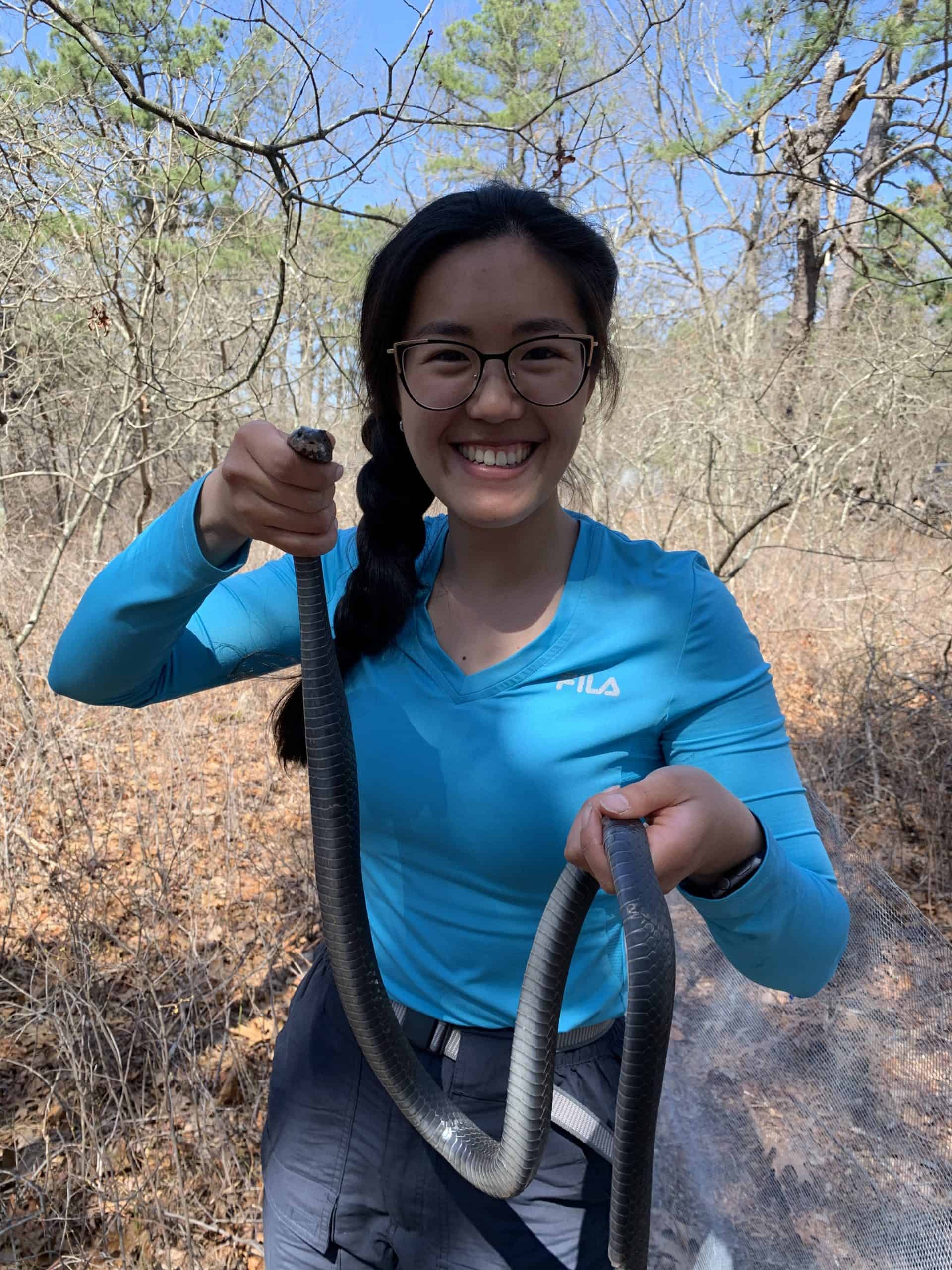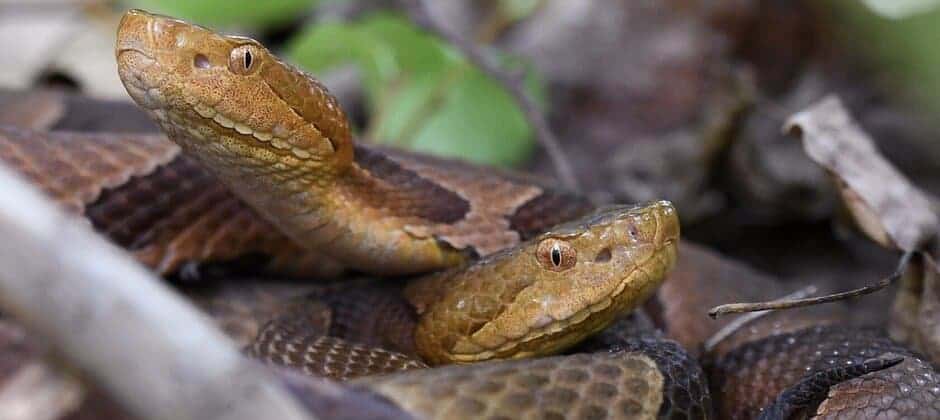Share this article
TWS2022: Fungus has minimal effect on some NJ copperheads
Snake fungal disease is a troubling issue for reptile biologists who have focused increased attention on the illness over the past decade or so. But while researchers have published a number of studies on the disease, which can impact species from California king snakes (Lampropeltis californiae) in the golden state to grass snakes (Natrix natrix) in Europe, researchers still aren’t clear about why some species, or even individual populations, seem more affected by the Ophidiomyces ophiodiicola fungus than others.
“Researchers were baffled. They didn’t know what was going on,” said TWS member Morgan Mark, a PhD student at Rutgers University.
Mark and her colleagues decided to look at how one species was dealing with the disease in northern New Jersey—the eastern copperhead (Agkistrodon contortrix). This research piggybacked on another study tracking copperheads using radio transmitters to learn more about their movement and habitat preferences.
In April and May of both 2020 and 2021, Mark and her colleagues visited copperhead dens, catching snakes as they basked in the sun soon after emerging from hibernation. The team took measurements and swabs of the head, back and belly to analyze fungal loads. After implanting radio transmitters in the snakes, Mark and her colleagues recaptured 30 copperheads throughout the two summers to repeat the measurements and swabs, until the reptiles went back into their dens to hibernate again in September and October.
“It was pretty cool,” Mark said of the fieldwork capturing copperheads. “It was amazing getting to work with one of the state’s most cryptic snakes that so few people get to see.” To capture the copperheads, the researchers used special hooks, which aren’t as troublesome as some people would imagine with the right training.

PhD student Morgan Mark holds an eastern copperhead placed in a special tube for handling the venomous snakes. Researchers place the snake in one end in order to safely swab for fungal DNA. Credit: Tyler Christensen
“Copperheads kind of get a bad rap because they are a venomous snake,” Mark said. Nonetheless, “I remember sending a picture of me holding a copperhead to my mom and she flipped out,” she added.
Copperhead haven
In a research poster presented at The Wildlife Society’s 2022 Annual Conference in Spokane, Mark revealed the results of her analysis.
Luckily for this population of snakes, the fungal disease was not that common. And where the swabs did reveal the fungus, the effects of the disease weren’t that detrimental on the individuals that carried it.
They also didn’t find any significant trends where fungal loads in infected individuals were related to the season they were examined. This was a surprise since other research has shown that snakes often have the highest fungal loads just as they come out of hibernation, Mark said. This is partly because the snakes’ immune systems aren’t as strong during the winter. Also, snake hibernacula provide, “a moist, somewhat warmer environment for the fungus to proliferate,” she said, though other research has found that the fungus can live host-free on the substrate, or even on fish heads or cricket legs.

Researchers also swabbed snakes captured opportunistically in the study area such as this eastern racer. Credit: Tyler Christensen
She and her colleagues also opportunistically swabbed other snakes they found around the copperhead dens such as eastern garter snakes (Thamnophis sirtalis sirtalis), eastern racers (Coluber constrictor) and eastern milk snakes (Lampropeltis triangulum). Many individual snakes share the same dens during hibernation, including those from various species, and some researchers believe that hibernacula may also be hot spots for transmission of the fungus that causes the disease.
Mark’s analysis revealed that one eastern garter snake they sampled at a den had the highest loads of the fungus and the most severe lesions of any snake in the study. Yet, strangely, the copperheads they captured from the same den, even those carrying fungal DNA, did not have severe symptoms.
Snake fungal disease is now found in at least 26 states and Puerto Rico, and other pit viper populations have responded severely to the illness.
Based on their findings, Mark said it’s hard to interpret why this population of eastern copperheads may be relatively unaffected. It could be due to the relatively dry lifestyle of the species—some researchers have speculated that water may soften snake scales, making them more susceptible to damage from the fungus. “Copperheads don’t really associate with water to the level of some other species like northern water snakes,” she said.
“Maybe the dry habitat was one factor,” she continued, but more research is needed to determine why the fungus doesn’t severely affect this population of copperheads, while it does affect other pit vipers like the eastern massasauga rattlesnakes (Sistrurus catenatus).
Header Image: Snake Fungal Disease (SFD) was found in one population of eastern copperheads in New Jersey, but they appear to be coping. Credit: Tyler Christensen








